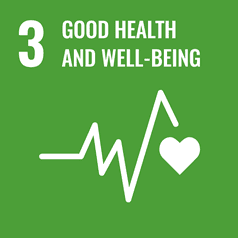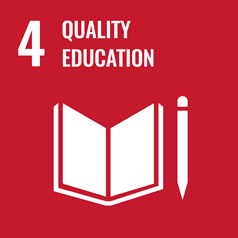| 2025 |
Patsan I, Magin P, Abbott P, Tait J, Fisher K, Fielding A, Davey A, Klein L, 'Does telehealth disrupt the trainee–supervisor learning environment in vocational general practice training? A qualitative study', Medical Education (2025) [C1]
|
|
|
| 2025 |
Turner A, Van Driel ML, Mitchell BL, Davis JS, Tapley A, Holliday E, Dizon J, Glasziou P, Bakhit M, Mulquiney K, Davey A, Fisher K, Baillie EJ, Fielding A, Moad D, Dallas A, Magin P, 'Changing the antibiotic prescribing of Australian general practice registrars' for acute respiratory tract infections: A non-randomized controlled trial', Family Practice, 42 (2025) [C1]
Background: Inappropriate antibiotic prescription for self-limiting respiratory tract infections (RTIs) by general practitioner (GP) registrars (trainees) is less commo... [more]
Background: Inappropriate antibiotic prescription for self-limiting respiratory tract infections (RTIs) by general practitioner (GP) registrars (trainees) is less common than by established GPs but still exceeds evidence-based benchmarks. A 2014 face-To-face educational intervention for registrars and supervisors reduced registrars' acute bronchitis antibiotic prescription by 16% (absolute reduction). We aimed to establish the efficacy of an updated registrar/supervisor RTI-management intervention (delivered at distance) on antibiotic prescribing. Methods: A non-randomized trial using a non-equivalent control-group nested within the ReCEnT cohort study. The intervention included online educational modules, registrar and supervisor webinars, and materials for registrar-supervisor in-practice educational sessions, and focussed on acute bronchitis as an exemplar RTI. The theoretical underpinning was the 'capability, opportunity, and motivation' (COM-B) framework. The intervention was delivered to registrars and supervisors of one large educational/training organization annually from mid-2021, with pre-intervention period from 2017, and with postintervention period ending 2023. Two other educational/training organizations served as controls. The primary outcome was antibiotics prescribed for acute bronchitis. Analyses used multivariable logistic regression with predictors of interest: Time (before/after intervention), treatment group, and an interaction term for time-by-Treatment group, adjusted for potential confounders. The interaction term P-value was used to infer statistical significance of the intervention effect. Results: Of 4612 acute bronchitis presentations, 70% were prescribed antibiotics. There was a 6.9% absolute reduction (adjusted) of prescribing in the intervention-group compared with the control-group. This was not statistically significant (Pinteraction.22). Conclusions: Failure to find a significant effect on prescribing suggests difficulties with scalability of this (and similar educational) innovations.
|
|
|
| 2025 |
Mitchell B, Magin P, Van Driel ML, Tapley A, Ralston A, Davey A, Holliday E, Dizon J, Moad D, Fielding A, Fisher K, Clarke L, Spurling G, 'Use of electronic point-of-care resources by early-career general practitioners and associations with their use during consultations: A cross-sectional analysis of consultation data.', BMJ Open, 15 (2025)
|
|
|
| 2025 |
Wilkins D, Tapley A, Dizon J, Holliday E, Davey A, Fielding A, Moad D, Van Driel M, Ralston A, Fisher K, Magin P, Stocks N, 'General practice registrar evaluation of long COVID in patients presenting with fatigue', Australian Journal of Primary Health, 31 (2025) [C1]
|
|
|
| 2025 |
Gao Y, Magin P, Tapley A, Holliday E, Dizon J, Fisher K, van Driel M, Davis JS, Davey A, Ralston A, Fielding A, Moad D, Mulquiney K, Clarke L, Turner A, 'Prevalence of Antibiotic Prescribing for Acute Respiratory Tract Infection in Telehealth Versus Face-to-Face Consultations: Cross-Sectional Analysis of General Practice Registrars’ Clinical Practice', Journal of Medical Internet Research, 27 (2025) [C1]
|
|
|
| 2025 |
Hamilton K, Magin P, Tapley A, Ralston A, Holliday EG, Dizon J, Davey A, van Driel M, Fisher K, Moad D, Fielding A, Hespe C, 'Temporal trends in tranexamic acid prescribing by Australian general practice registrars for heavy menstrual bleeding.', Australian journal of general practice, 54, 895-902 (2025)
|
|
|
| 2024 |
Fisher K, Patsan I, Klein L, Turner A, Runciman D, Fielding A, Tran M, Pond D, Guppy M, Starling C, D'Amore A, Davey A, Magin P, 'Registrars as teachers: a qualitative study exploring the experiences of Australian general practice registrars in teaching roles', BMC MEDICAL EDUCATION, 24 (2024) [C1]
Background: GP registrars (specialist vocational trainees in general practice) are interested in teaching, and there are considerable benefits to teaching during traini... [more]
Background: GP registrars (specialist vocational trainees in general practice) are interested in teaching, and there are considerable benefits to teaching during training. There are, however, significant barriers for registrars as teachers, including inadequate funding, time pressures, and limited teacher training. Current evidence does not include medical educator (ME) perspectives or compare teaching settings (e.g. university vs. in-practice). Further evidence is needed to inform programs supporting registrar teaching roles. This project aimed to explore the experiences of Australian GP registrars as teachers in different contexts and from multiple stakeholder perspectives. Methods: A qualitative study with GP registrars, GP supervisors, MEs, and medical students was conducted. Participants were registrars and new (within 12 months) Fellows with teaching experience during training, supervisors who supervised a registrar in the preceding 12 months, Royal Australian College of General Practitioner MEs, and medical students with experiences of being taught by registrars. Recruitment was open to participants nationwide and sampling was purposive, aiming for a maximum variation sample. Data collection was performed via videoconference and analysed using reflexive thematic analysis. Findings: Interviews were conducted with 15 registrars, 10 supervisors, and one ME. Two focus groups involved four MEs and five medical students respectively. Registrar participants taught in a variety of settings, including in-practice, universities, hospitals, and at educational workshop days. Three had experience in GP academic posts and one as a registrar ME. There were four major themes. 1) Near-peer teaching by registrars is valuable - both for medical students and registrars. 2) Teaching makes you a better GP - participants noted the transferability of teaching skills to clinical practice. 3) The importance of the teaching context¿ this was identified as an important determinant for registrars in teaching roles. 4) Registrar teaching strengthens the GP workforce ¿ participants noted that teaching could elevate general practice as a specialty and increase interest in GP training. Conclusions: Study participants saw teaching as a core skill for GPs, with transferability to their clinical practice. Registrar participants wanted greater promotion and support for teaching opportunities that counted towards attainment of Fellowship. These findings have implications for teaching practices, MEs, universities, and training providers.
|
|
Open Research Newcastle |
| 2024 |
Reid N, Fisher K, Ralston A, Tapley A, Holliday E, Charlton I, Chen K, Dizon J, Moad D, Fielding A, Davey A, van Driel M, Clarke L, Magin P, 'Temporal trends in the prevalence of GP registrars' long-term paediatric asthma control medications prescription', NPJ PRIMARY CARE RESPIRATORY MEDICINE, 34 (2024) [C1]
|
|
|
| 2024 |
Fisher K, Tapley A, Ralston A, Davey A, Fielding A, van Driel M, Holliday E, Ball J, Dizon J, Spike N, Clarke L, Magin P, 'Video versus telephone for telehealth delivery: a cross-sectional study of Australian general practice trainees', FAMILY PRACTICE, 41, 198-202 (2024) [C1]
Background: Remunerated telehealth consultations were introduced in Australia in 2020 in response to the COVID-19 pandemic. Videoconferencing has advantages over teleph... [more]
Background: Remunerated telehealth consultations were introduced in Australia in 2020 in response to the COVID-19 pandemic. Videoconferencing has advantages over telephone-consulting, including improved diagnostic and decision-making accuracy. However, videoconferencing uptake in Australia has been low. This study aimed to establish prevalence and associations of video versus telephone consultations in Australian general practice (GP) registrars' practice. Methods: A cross-sectional analysis of data from 2020 to 2021 (three 6-monthly data-collection rounds) from the Registrars Clinical Encounters in Training (ReCEnT) study. GP registrars record details of 60 consecutive consultations every 6-month term, for a total of 3 terms. Univariable and multivariable logistic regression were performed within the Generalized Estimating Equations framework with the outcome video versus telephone. Results: 102,286 consultations were recorded by 1,168 registrars, with 21.4% of consultations performed via telehealth. Of these, telephone accounted for 96.6% (95% CI: 96.3-96.8%) and videoconferencing for 3.4% (95% CI: 3.2-3.7%). Statistically significant associations of using videoconferencing, compared to telephone, included longer consultation duration (OR 1.02, 95% CI: 1.01-1.03 per minute; and mean 14.9 versus 12.8 min), patients aged 0-14 years old (OR 1.29, 95% CI: 1.03-1.62, compared to age 15-34), patients new to the registrar (OR 1.19, 95% CI: 1.04-1.35), part-time registrars (OR 1.84, 95% CI: 1.08-3.15), and areas of less socioeconomic disadvantage (OR 1.27, 95% CI: 1.00-1.62 per decile). Conclusions: Registrars' telehealth consultations were mostly performed via telephone. Telephone use being associated with socioeconomic disadvantage has health equity implications. Future research should explore barriers to videoconferencing use and strategies to increase its uptake.
|
|
Open Research Newcastle |
| 2024 |
Magin P, Ralston A, Fielding A, Holliday E, Tran M, Tapley A, van Driel M, Ball J, Moad D, Mitchell B, Fisher K, Fitzgerald K, Spike N, Turner R, Davey A, 'Prediction of general practice licensure/certification examination performance by a measure of 'questionable' activities in clinical practice: a retrospective cohort study', POSTGRADUATE MEDICAL JOURNAL, 100, 382-390 (2024) [C1]
|
|
Open Research Newcastle |
| 2024 |
Fisher K, Tapley A, Ralston A, Davey A, Holliday E, Dizon J, Wearne S, Fielding A, van Driel M, Spike N, Clarke L, Magin P, 'Australian general practice registrars' billing patterns: a cross-sectional analysis from the Registrars Clinical Encounters in Training (ReCEnT) study', BMC HEALTH SERVICES RESEARCH, 24 (2024) [C1]
|
|
|
| 2023 |
Fisher K, Tapley A, Ralston A, Davey A, Fielding A, van Driel M, Holliday E, Ball J, Dizon J, Spike N, Clarke L, Magin P, 'General practice trainees' telehealth use during the COVID-19 pandemic: a cross-sectional study', FAMILY PRACTICE, 40, 638-647 (2023) [C1]
|
|
Open Research Newcastle |
| 2023 |
Magin P, Fisher K, 'Online behavioural interventions for children and young people with atopic eczema: refining the way forward', BRITISH JOURNAL OF DERMATOLOGY, 188, 453-453 (2023)
|
|
|
| 2023 |
Ralston A, Fielding A, Holliday E, Ball J, Tapley A, van Driel M, Davey A, Turner R, Moad D, FitzGerald K, Spike N, Mitchell B, Tran M, Fisher K, Magin P, ''Low-value' clinical care in general practice: a cross-sectional analysis of low-value care in early-career GPs' practice', INTERNATIONAL JOURNAL FOR QUALITY IN HEALTH CARE (2023) [C1]
|
|
Open Research Newcastle |
| 2023 |
Fisher K, Fielding A, Ralston A, Holliday E, Ball J, Tran M, Davey A, Tapley A, Magin P, 'Exam prediction and the general Practice Registrar Competency Assessment Grid (GPR-CAG)', EDUCATION FOR PRIMARY CARE, 34, 268-276 (2023) [C1]
|
|
Open Research Newcastle |
| 2023 |
Bentley M, Ralston A, Clarke L, Davey A, Holliday E, Fielding A, van Driel M, Tapley A, Ball J, Fisher K, Spike N, Magin P, 'General practice registrars training part-time: a cross-sectional analysis of prevalence and associations', EDUCATION FOR PRIMARY CARE, 34, 244-253 (2023) [C1]
|
|
Open Research Newcastle |
| 2022 |
Magin P, Fisher K, 'Body dysmorphic disorder, skin diseases and psychological morbidity: common and complex', BRITISH JOURNAL OF DERMATOLOGY, 187, 5-5 (2022)
|
|
|
| 2022 |
Davey A, Tapley A, van Driel M, Holliday E, Fielding A, Ball J, Mulquiney K, Fisher K, Spike N, Clarke L, Moad D, Ralston A, Patsan I, Mundy B, Turner A, Tait J, Tuccitto L, Roberts S, Magin P, 'The Registrar Clinical Encounters in Training (ReCEnT) cohort study: updated protocol', BMC PRIMARY CARE, 23 (2022)
|
|
|
| 2022 |
Fisher K, Magin P, 'The telehealth divide: health inequity during the COVID-19 pandemic', FAMILY PRACTICE, 39, 547-549 (2022)
|
|
|
| 2022 |
Fisher K, Davey AR, Magin P, 'Telehealth for Australian general practice The present and the future', AUSTRALIAN JOURNAL OF GENERAL PRACTICE, 51, 626-629 (2022) [C1]
Background In March 2020, 56 temporary Medicare Benefits Schedule telehealth item numbers were introduced for Australian general practitioners (GPs) in response to COVI... [more]
Background In March 2020, 56 temporary Medicare Benefits Schedule telehealth item numbers were introduced for Australian general practitioners (GPs) in response to COVID-19. Telehealth is now a permanent part of Australian primary care and, as such, an adequate understanding of the benefits, barriers and facilitators is essential for GPs. Objective The aim of this article is to examine the use of telehealth in general practice in Australia and to explore the benefits, barriers and facilitators to performing telehealth consultations. A narrative review was performed. Discussion Benefits of telehealth include increased access to healthcare and reduced risk of COVID-19 transmission. Barriers can include lack of technological infrastructure, limitations to performing physical examination and concerns regarding privacy and confidentiality. Facilitators include tailored GP training and sustainable funding models. Further research and training are needed to ensure that telehealth is used optimally and equitably in Australia.
|
|
Open Research Newcastle |
| 2016 |
Lucewicz A, Fisher K, Henry A, Welsh AW, 'Review of the correlation between blood flow velocity and polycythemia in the fetus, neonate and adult: appropriate diagnostic levels need to be determined for twin anemia-polycythemia sequence', ULTRASOUND IN OBSTETRICS & GYNECOLOGY, 47, 152-157 (2016) [C1]
|
|
|
| 2016 |
Fisher KE, Welsh AW, Wilson I, Henry A, 'Uncommon complications of monochorionic twin pregnancies: Twin anaemia-polycythaemia sequence.', Australasian journal of ultrasound in medicine, 19, 56-63 (2016) [C1]
|
|
|
| 2016 |
Fisher KE, Welsh AW, Henry A, 'Uncommon complications of monochorionic twin pregnancies: Twin reversed arterial perfusion sequence.', Australasian journal of ultrasound in medicine, 19, 133-141 (2016) [C1]
|
|
|


